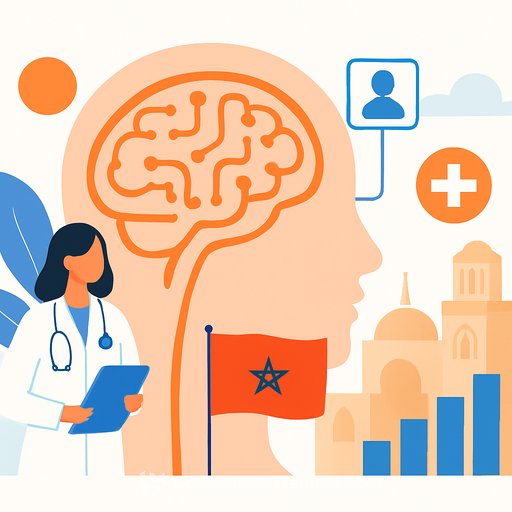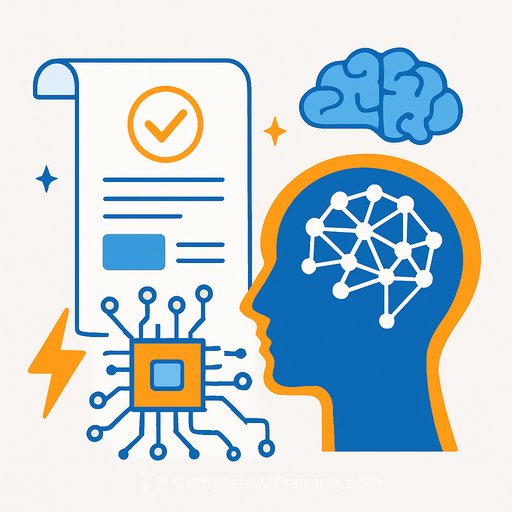Health AI Is an Architecture Built on Abstraction
Most people picture Health AI as code, models, and servers. That's the surface. The core is abstraction: building symbolic systems that represent how experts think, decide, and act under pressure.
As one foundational insight puts it, computer science isn't about computers; it's about the ideas those machines let us express. That perspective applies directly to healthcare. The real work is modelling clinical reasoning so it can be extended, checked, and made reliable at scale. For context, see the classic course on abstraction from MIT's program in computational thinking here.
Abstract Engineering for Clinical Expertise
Decades of research in cognitive science points to abstraction as the engine behind intelligent behavior. In practice, Health AI isn't about volume of data or brute-force compute. It's about distilling the structure of expert judgment and making it usable.
- Capture the core thinking patterns of clinicians.
- Architect diagnostic and therapeutic reasoning explicitly.
- Convert tacit expertise into operational, auditable systems.
Think of it as invisible scaffolding: a disciplined way to formalize how good decisions happen and support them with consistent machinery.
The Real Constraint Is Cognitive, Not Technical
Work in medical cognition (e.g., Patel, Arocha, Zhang) shows clear human limits even among experts. Performance degrades under time pressure, fatigue, and information saturation.
- Restricted working memory.
- High cognitive load during complex cases.
- Bias under stress and interruption.
- Difficulty synthesizing large, heterogeneous inputs at once.
Machines don't tire. They can integrate variables at scales no clinician can track in real time. The mandate for Health AI is to extend clinical cognition-an analytical second mind that surfaces signal, guards against bias, and maintains consistency without getting exhausted.
The Three "Spells" of Abstract AI Engineering
1) Black-Box Abstraction: Simplification at Scale
Encapsulate complexity behind a reliable interface. A risk model, triage engine, or imaging predictor becomes a unit clinicians can trust and reuse-without wading into math or code every time.
- Clear inputs and outputs.
- Auditable performance and guardrails.
- Versioning and monitoring as part of clinical quality management.
2) Interface Abstraction: Unifying Data Languages
Healthcare data is multilingual: imaging, genomics, notes, labs, devices. Standardized interfaces make them interoperable and clinically useful. This is essential for coordination across hospitals and regions.
- Adopt open data standards (e.g., HL7 FHIR) for consistency.
- Define canonical event models (orders, results, encounters).
- Map local vocabularies to shared ontologies.
3) Metalinguistic Abstraction: Inventing New Medical Vocabularies
When existing frameworks fail to describe a condition well, create better ones. This means designing new representations that emphasize what matters for precision medicine and silence noise.
- Engineer features and concepts with clinical meaning, not just statistical lift.
- Build composite variables that reflect mechanisms, not artifacts.
- Let the data model mirror how experts actually think.
Morocco's 2030 Health Intelligence Agenda
Across Morocco, public institutions, hospitals, universities, and startups are aligning on a pragmatic goal: use digital intelligence to augment clinicians. That alignment matters because it grounds systems in clinical reality, not tech demos.
The 2030 World Cup will add a surge of athletes and visitors, along with operational demands on emergency care, surveillance, and population health. That requires solid data infrastructure, rapid knowledge integration, and decision support that holds up under load.
- Interoperability first: unify data exchange across regions and providers.
- Clinician-in-the-loop design: build around real workflows and time constraints.
- Governance: bias testing, model versioning, incident response, and outcome tracking.
- Education: upskill teams in data literacy, model limits, and safe deployment.
Morocco isn't just adopting tools. It is building its own model of applied health intelligence through interdisciplinary collaboration and execution discipline.
What Healthcare Teams Can Do Now
- Inventory clinical decisions that are frequent, high-impact, or error-prone. Prioritize two for AI support.
- Define abstraction layers: inputs, representations, models, outputs, and feedback loops.
- Choose standards before tools: terminologies, events, and exchange formats.
- Build evaluation into the workflow: pre-commit metrics, prospective audits, and drift detection.
- Pair clinical leads with data scientists. Make joint decisions on features, thresholds, and overrides.
We Are the New Artisans of Healing
Health AI is a creative, disciplined way to formalize expert judgment and make it reliably scalable. The goal isn't to replace clinicians. It's to extend their thinking with structures that hold, even on the hardest days.
Teams that treat AI as abstract engineering-not just software-set themselves up for safer care, clearer reasoning, and better outcomes.
Further Learning
- AI courses by job role for healthcare leaders building team capability.
- Latest AI courses to stay current on methods and deployment practices.
Your membership also unlocks:










